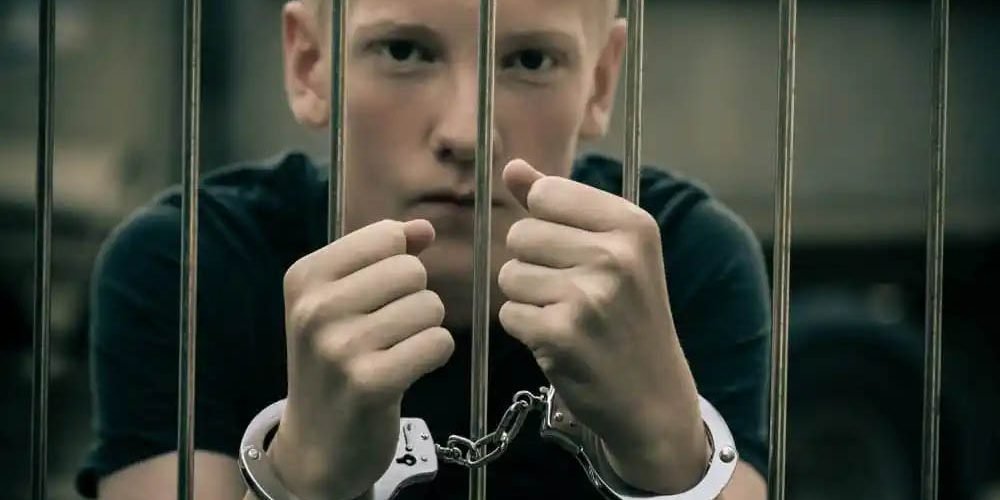It’s no secret that some people have better access than others to essentials like healthcare, healthy food, and education. Poverty is a persistent issue in the United States, despite the wealth that flows through the country. For many children who grow up in poverty, their lack of access to resources like a proper education can lead to delinquency and a life of incarceration.
Many underserved communities see a lot of childhood delinquency. When children have no options for pulling themselves out of poverty, they often turn to crime. By improving access to a quality education, we can help break this cycle and reduce childhood delinquency throughout the country.
Table of Contents
High Incarceration Rates for Young People
In the United States, we have the largest population of incarcerated people in the world. We also lock up more young people than any other country. Those grim statistics don’t tell the full story, though. Why are so many young people going to prison in this country?
One of the main reasons is the harshness of criminal laws, such as zero-tolerance policies. These policies often involve reporting minors to the police for infractions at school and harsh punishments for minor crimes, in an effort to prevent more serious crimes in the future.
Unfortunately, this means young people are often incarcerated and stigmatized. They fall behind in school and begin a cycle of going in and out of detention. Zero-tolerance policies might sound good, but they ultimately result in kids never getting a chance to break the cycle of delinquency.
Who is Most Affected?
Children and teens who are most affected by these harsh disciplinary policies tend to be children of color and those in low socioeconomic situations. Known as the “school-to-prison pipeline,” the problem begins with harsh discipline in schools that often involve police officers. Many students of color are punished much more harshly than their white peers, resulting in wide achievement gaps and increased delinquency.
Students of color, who already face discrimination in their daily lives, are frequently suspended or even incarcerated as punishment, causing them to miss days of school. This makes them more likely to end up in the criminal justice system and continuing the cycle of poverty. Systemic racism reaches kids at a critical time in their lives and can impact the trajectory of their entire lives.
How Educational Reform Can Help
It’s clear that to reduce childhood delinquency, several factors need to be addressed. Education is a powerful tool for helping to reduce the incarceration of young people. Improving the education system and reconsidering how schools approach discipline is critical for keeping students out of the criminal justice system.
Instead of focusing on zero-tolerance policies and punishment with suspension, which keep kids out of school and only make delinquency more likely, schools need to work on building a supportive environment focused on finding solutions instead of punishing students when discipline issues come up. Students who fall behind in school due to punishments for minor infractions are not being given the opportunity to succeed.
Schools also need to understand the role systemic racism plays and ensure that discipline is consistent across the entire student population. Teachers must be trained in cultural competency and learn how to support students of color, instead of labeling them as “bad” or holding them to higher standards than their peers.
Educational reform must also involve addressing resource disparities. Marginalized communities are typically served by underfunded schools that lack the resources to help students succeed and prepare them for skilled work or university courses. Funding schools in low-income areas would empower teachers to help kids succeed.
Providing Support for Kids in the System
Preventing delinquency is critical, but we also have to support kids who have already entered the juvenile detention system. A shocking 66% do not go back to school after they are released.
Creating better opportunities for students who are incarcerated might help break the cycle and give kids hope that they can one day move on from their experience and have a better life. Better educational standards for juvenile detention facilities and improved access to counseling and support could make a world of difference for students and help them get back on track.
Reasons for Hope
It’s terrible to see children and teens committing crimes that will impact the rest of their lives. It’s terrible to see people struggling in a country where people have so much. But despite all that, there are some reasons for hope.
Juvenile confinement is down significantly in America, thanks to some changes in state and federal laws. Keeping kids out of jail is important for helping them recover from mistakes and go on to lead productive lives. Once a child is in the juvenile detention system, it’s harder to keep them out of it again.
We still have a long way to go, but improving education will play an important role in giving children every chance to succeed. Every young person deserves a chance at a good life, regardless of their zip code, race, or their family situation. If we can provide educational equality, that will go a long way toward giving young people the opportunity to succeed.





